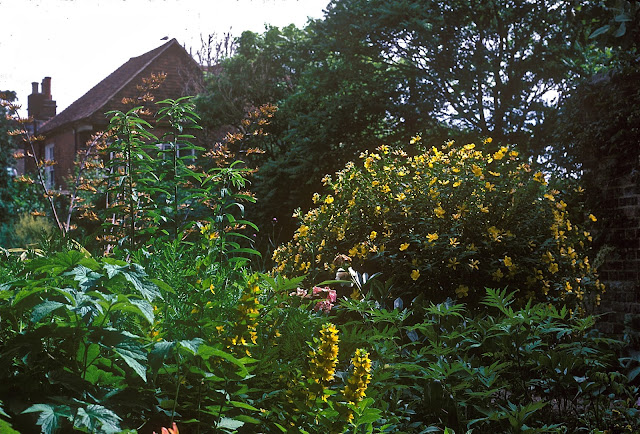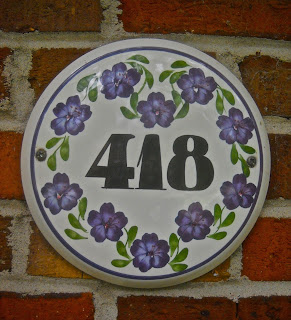 |
| Lamb House, Rye, England |
"Is it hogweed?" an elderly woman asks her friend.
"I think it's angelica," volunteers a passerby.
Later I hear one of the elderly women tell the only young woman in the garden, "That's angelica with the pom-poms on it, we think."
They settle onto a bench near the wooden arm chair where I sit in the garden at Lamb House. Because I have an assignment to eavesdrop for the fiction workshop I'll be taking with Ann Granger and Angela Arney in a few days, I jot down as much as I can of what I hear.
The seated women talk of a "loopy" acquaintance who, because she couldn't read, asked a mutual acquaintance read to her a letter from her foster parents. The mutual acquaintance read with great reluctance. The letter detailed how the loopy woman had been locked up under the stairs by her father and beaten by her mother.
"No wonder she's loopy."
The pair leave.
I remain half hidden in the wooden chair. Other garden visitors come and go. A man walks through with a companion. "A series of rooms, isn't it?" he says.
 |
| Climbing roses at Lamb House |
I first became aware of Lamb House when I read Rumer Godden's memoir A House with Four Walls, in which Godden says "It was at Lamb House that I learned a little about old roses; there was a whole garden of them round a waterlily and goldfish pond where the Garden Room had once stood...."
Henry James resided at Lamb House from 1897 to 1916. While there he wrote Wings of a Dove, The Golden Bowl, and The Ambassadors.
E. F. Benson is said to have used Lamb House as the basis for Mallards, a fictional home in his humorous Mapp and Lucia novels. I began reading Benson's books soon after the Mapp and Lucia television series aired on PBS in the early 1990s, a time in my life when I needed a good laugh.
 |
| The garden at Lamb House |
In April of 2003 I came upon a listing for Lamb House in the Gardens to Visit Guide, a free booklet packaged with the BBC Gardeners' World magazine I purchased at Glasgow Airport. According to the Guide, the property "features a charming walled garden that boasts a rich variety of plants, including roses, a gum tree and trumpet creeper." I decided to make a day trip to Rye during a trip to London in June of that same year.
With the house and garden only open two days a week, and only open in the afternoon, I knew I would have to take care in planning my trip. And I did. In spite of issues with the train and a lack of helpfulness from staff members at Charing Cross Station, I managed to get there.
Arriving in Rye before visiting hours at Lamb House, I lunched at Fletchers House Tea Room where the sedate pace of service slowed further as chef and waitstaff hurried to the door to see and photograph a fellow employee passing by with her uniformed groom on the way from their marriage at the city hall. The bride wore a white sari.
About Lamb House, I wrote:
It isn't quite as grand as I'd expected. The rooms are smaller. The oak paneling is dry and contracted. I'm sitting in the kitchen garden to the side of the house near where the garden room stood before a bomb blast destroyed it in 1940. Behind the house stands an Indian bean tree.
On my way back to the rail station, I stopped by Cinque Ports Pottery and ordered a ceramic house plaque. I am sorry to report that the pottery closed its doors in 2007. How fortunate I am to have this plaque.
 |
| Ceramic wall plaque made by Cinque Ports Pottery |